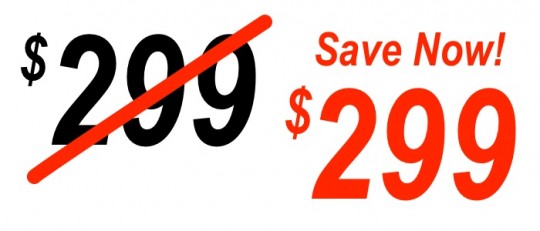A Super-Simple Way to Make Your Prices Seem Lower… With One Catch
 Want to make your prices seem lower without actually changing them? I’ve got a research-based technique that will do exactly that, with one small catch: your prices will only look lower to your male customers.
Want to make your prices seem lower without actually changing them? I’ve got a research-based technique that will do exactly that, with one small catch: your prices will only look lower to your male customers.
 In a study titled Are Men Seduced by Red? The Effect of Red Versus Black Prices on Price Perceptions, researchers in the U.K. and U.S. describe a series of experiments on color and pricing.
In a study titled Are Men Seduced by Red? The Effect of Red Versus Black Prices on Price Perceptions, researchers in the U.K. and U.S. describe a series of experiments on color and pricing.
For men, the perceived savings when prices were printed in red were about twice as high as when they were printed in black. Women, however, were mostly unaffected by the color of the price.
The effect was less pronounced when the male subjects were highly engaged in the shopping task. So, using red prices will be most effective for impulse purchases vs. well-researched buys, like cars or high-end cameras.
While the perceived savings difference is small in percentage terms, it seems possible that it could have an outsized effect on casual shoppers who would perceive that one merchant is cheaper even though the actual prices are the same.
Once again, the study shows, women are superior to men at not being influenced by irrelevant factors in an advertisement. (See A Pretty Woman Beats a Good Loan Deal and Sexy Pictures and Gender Differences for more examples of male susceptibility.)
The good news for marketers is that using red prices won’t hurt the ad’s appeal to women, so they can appeal to male customers without decreasing sales to females.
What color are your prices now? If you make a change, share your results in a comment!
